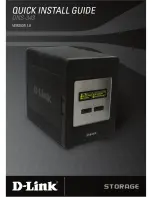
Chapter 13 Spanning Tree Protocol
MES3500 Series User’s Guide
116
On each bridge, the bridge communicates with the root through the root port. The root port is the
port on this Switch with the lowest path cost to the root (the root path cost). If there is no root
port, then this Switch has been accepted as the root bridge of the spanning tree network.
For each LAN segment, a designated bridge is selected. This bridge has the lowest cost to the root
among the bridges connected to the LAN.
13.1.2 How STP Works
After a bridge determines the lowest cost-spanning tree with STP, it enables the root port and the
ports that are the designated ports for connected LANs, and disables all other ports that participate
in STP. Network packets are therefore only forwarded between enabled ports, eliminating any
possible network loops.
STP-aware switches exchange Bridge Protocol Data Units (BPDUs) periodically. When the bridged
LAN topology changes, a new spanning tree is constructed.
Once a stable network topology has been established, all bridges listen for Hello BPDUs (Bridge
Protocol Data Units) transmitted from the root bridge. If a bridge does not get a Hello BPDU after a
predefined interval (Max Age), the bridge assumes that the link to the root bridge is down. This
bridge then initiates negotiations with other bridges to reconfigure the network to re-establish a
valid network topology.
13.1.3 STP Port States
STP assigns five port states to eliminate packet looping. A bridge port is not allowed to go directly
from blocking state to forwarding state so as to eliminate transient loops.
13.1.4 Multiple RSTP
MRSTP (Multiple RSTP) is ZyXEL’s proprietary feature that is compatible with RSTP and STP. With
MRSTP, you can have more than one spanning tree on your Switch and assign port(s) to each tree.
Each spanning tree operates independently with its own bridge information.
Path Cost
1Gbps
4
20,000
1 to 200,000,000
Path Cost
10Gbps
2
2,000
1 to 200,000,000
Table 29
STP Path Costs
LINK SPEED
DEFAULT VALUE
(SHORT)
DEFAULT VALUE
(LONG)
ALLOWED RANGE
Table 30
STP Port States
PORT STATE
DESCRIPTION
Disabled
STP is disabled (default).
Blocking
Only configuration and management BPDUs are received and processed.
Listening
All BPDUs are received and processed.
Note: The listening state does not exist in RSTP.
Learning
All BPDUs are received and processed. Information frames are submitted to the learning
process but not forwarded.
Forwarding
All BPDUs are received and processed. All information frames are received and forwarded.
Summary of Contents for MES3500 Series
Page 16: ...Table of Contents MES3500 Series User s Guide 16 Appendix C Legal Information 357 Index 362...
Page 17: ...17 PART I User s Guide...
Page 72: ...72 PART II Technical Reference...
Page 178: ...Chapter 22 Policy Rule MES3500 Series User s Guide 178 Figure 98 Policy Example EXAMPLE...
Page 360: ...Appendix C Legal Information MES3500 Series User s Guide 360 Environmental Product Declaration...
















































